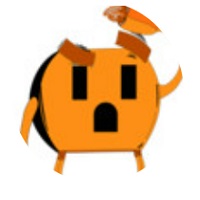What Does UL Listing Mean?
The UL-Listing seal, also known as the “Underwriters Laboratory” seal, that is stamped on most electrical products is an important mark that products carry. It used to be an insurance industry organization, but now it is independent, non-profit organization. It tests electrical components and equipment for potential hazards. “Product Certifications: What Is a UL Listing?”

Recommended Products
What does UL help companies with?
- Demonstrate Safety
- Protect Brand Reputation
- Enhance Sustainability
- Delivering Quality and Performance
When something is UL-Listed, that means that the UL has tested the device, and it meets their requirements for safety (fire or shock hazard). Because of this it is highly recommended that all of your electrical products carry the UL seal so that you can ensure the customers safety and satisfaction with your products.
Read more about product certification, “Product Certifications: Why Your Products Should Be Certified?”
All of our GFCI receptacles carry this safety seal.

Since 1961 when the Rucker Manufacturing Company created GFCI receptacles they have been the receptacle of choice in the home setting. “What is a GFCI Receptacle?”, “What Is the Difference between a GFCI Receptacle & a GFI Outlet?”, and “Which GFCI Do I Use and Where?”
What is the NFPA and NEC?
Many city and state safety organizations strictly enforce the use of UL-listed products in the construction and wiring of buildings. To avoid doing more work than necessary be sure to check the local building codes in your area before installing any non-UL products or any product that is not certified by a safety organization. The main organization you want to pay attention to is the NFPA or National Fire Protection Association.

The National Fire Protection Association (NFPA) was established in 1896 to reduce the worldwide burden of fire and other hazards on the quality of life by providing and advocating:
- Consensus Codes and Standards
- Research
- Training
- Education
This organization established and updates The National Electrical Code (NEC). This code, first published in 1897, is used by Electricians when installing electrical outlets and receptacles in residential or commercial setting. UL is just one of the organizations the NEC recognizes as an approved safety testing organization.

The NFPA and NEC work hand in hand with UL to constantly update their safety and testing protocols. These lists are usually updated on a yearly or bi-yearly basis, and all electrical products must be tested and re-tested in order to comply with these new updated standards.
Check out the new NEC code regulations, “Updated 2017 NEC Code Regulations by State.”
What industries does UL test?
- Adhesives and coatings
- Plastics
- Rubber and elastomers
- Industrial, automotive and aerospace
- Commercial and government
- Packaging and paper
What if I have an older product?
There are some differences from year to year, but do not fret…If, for example, you have a GFCI Receptacle from the 2003 list it is safe to use in your home or office, just be sure to test it regularly (UL suggests doing it monthly). It is recommended that if you have an older home or office, that you change out the GFCI receptacles to a newer version.
Products that are from 2003, may have you worried that they don’t function the same as a newer item. This is not entirely true. Since some products sit on store shelves for a few years until all inventory is exhausted, they are exempt from being pulled off of shelves, and being retested. GFCI receptacles, for example, from 2003 are still safe to use. You just need to be aware that the standards are constantly changing.
Find out more about when to change your outlets, “When to Change Your Outlets”
The 2003 UL list states that all GFCI receptacles must include:
- Immunity to voltage surges
- Resistance to moisture and corrosion
- Reverse line-load miswiring
- Resistance to environmental noise
It is because of these new requirements that GFCI receptacles are now approved for damp application.
The 2006 UL list adds extra safety precautions to those previously established in 2003.

What extra precautions were added to the 2006 UL list?
- GFCI receptacle’s end of life is when it’s not able to pass its internal test function
- End of life is indicated by visual or audible means
- Incapable of delivering power
In other words, GFCI receptacles must be able to let the user know via a light on the wall plate or by emitting sound that it is wired improperly or no longer can perform its duties and must be changed.
Do you feel more confident about what materials you’re going to get for your next building project? As you have read the UL organization is just one of the few that does its best to make sure that all of our products do not cause any fire or electrical hazards. And most of the time those products that pass their tests are going to save you money in the long run. So what are you waiting for? Start browsing for the electrical materials on your next project.
Stay Connected
Recommended Products
Receive special deals and more, right to your inbox
Receive special deals and more, right to your inbox





